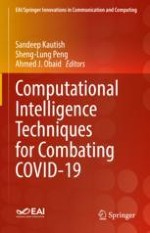This book presents the latest cutting edge research, theoretical methods, and novel applications in the field of computational intelligence and computational biological approaches that are aiming to combat COVID-19. The book gives the technological key drivers behind using AI to find drugs that target the virus, shedding light on the structure of COVID-19, detecting the outbreak and spread of new diseases, spotting signs of a COVID-19 infection in medical images, monitoring how the virus and lockdown is affecting mental health, and forecasting how COVID-19 cases and deaths will spread across cities and why. Further, the book helps readers understand computational intelligence techniques combating COVID-19 in a simple and systematic way.
